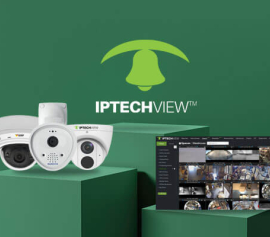How to Tell If a Motion Sensor Has a Camera
Hidden cameras have become a privacy issue everywhere, and sometimes, the motion sensors you see may have a dark secret. However, instead of worrying about it, you can check any sensor yourself with the proper knowledge.
Motion sensors typically don’t have cameras. They don’t need one as they function quite differently. However, such sensors can be integrated with cameras.
So, are there ways you can find out if a motion sensor has cameras? Yes, there are! In this guide, we will let you know what to look for when trying to detect hidden cameras in motion sensor devices.
What Are Motion Sensors?
A motion sensor is a device for detecting and quantifying movement within its surroundings. Applications ranging from security systems to automated lighting to smart home technology depend on these electronic parts.
Motion Sensor Components
Motion sensors typically consist of three main components:
Sensor Unit
The heart of a motion sensor, the sensor unit, detects environmental changes. Common types include:
- Passive Infrared (PIR) Sensors: Often used for security lighting and alarms, these detect variations in infrared radiation.
- Microwave Sensors: These sensors find moving things by producing and absorbing microwave pulses.
- Ultrasonic Sensors: These sensors use sound waves to track the return times of echoes, therefore indicating motion.
- Dual Technology Sensors: Combining PIR with microwave technology, these sensors have fewer false alarms and more precision.
Embedded Computer
The processing unit interprets data from the sensor unit to detect motion. It analyzes signal patterns to determine if movement has occurred and then initiates corresponding actions, such as activating alarms or lights.
Hardware (Mechanical Component)
The housing encompasses the physical structure, mounting hardware, and power supply, providing the essential framework for the sensor's operation. If there are any cameras in a motion sensor device, it will be housed within the hardware frame alongside the sensors and the computer.
How Motion Sensors Work
Motion sensors operate by detecting environmental changes. While microwave sensors detect movement by changes in the electromagnetic field, PIR sensors—for example, measure the heat produced by moving objects.
When the sensor detects motion, it sends a signal to the embedded computer, which analyzes the data and sets off suitable reactions, such as turning on security alarms or lighting.
Motion sensors, as you can guess, do not require a camera to operate. Hence, most of these devices will not feature cameras. That does not mean, however, that you will not come across any equipment, including covert cameras.
Do Motion Sensors Have a Camera?
You might have wondered if motion sensor cameras actually exist. The short answer is no. Motion sensors and cameras are separate devices. However, they work incredibly well together.
Many people use them as a powerful combination for home or business security systems. When a motion sensor detects movement, it can trigger a security camera to start recording, providing valuable evidence of any suspicious activity.
Ways to Find If a Motion Sensor Has a Camera
When you are searching for cameras in a device that’s supposed to be a motion sensor, you are looking for any signs of probable doubts. This means that if you have even a bit of doubt that there could be a camera inside and it may threaten your privacy, then you should call an expert.
With that being said, below are the most common ways people identify cameras inside motion sensor devices.
1. Visually Inspecting the Motion Sensor
Look for any black holes, glossy surfaces, or lens openings that could indicate a camera. Examine the front-facing power indicator slot, logos, and fake screw holes, as these are common hiding places for lenses.
If the device is entirely white, it's more likely to be a standard motion sensor without a camera.
2. Use Your Phone's Camera
Use your phone's front-facing camera to examine the motion sensor for hidden lenses. Some phone cameras can detect infrared light, which might reveal a hidden camera's night vision feature.
3. Unscrew the Motion Sensor
If the methods above don’t give you a satisfying answer, it’s time to get your hands busy.
Carefully unscrew the motion sensor from the ceiling or wall. Inspect the interior for any wires, circuit boards, or unusual components that might indicate a hidden camera.
4. Listen for Buzzing Sounds
Listen carefully for a faint buzzing noise coming from the motion sensor. Some hidden cameras equipped with motion sensors emit a subtle hum when active. Move around the room to pinpoint the source of any unusual sounds.
5. Turn Off the Lights and Use a Flashlight
In a darkened room, use a flashlight to carefully inspect the motion sensor for any tiny, blinking red or green lights. These could be indicators of a hidden camera.
If you discover any suspicious components, wires, lenses, or lights after following these steps, there's a strong possibility that the motion sensor contains a hidden camera. For your privacy, it's advisable to have a professional inspect the device or remove it entirely.






